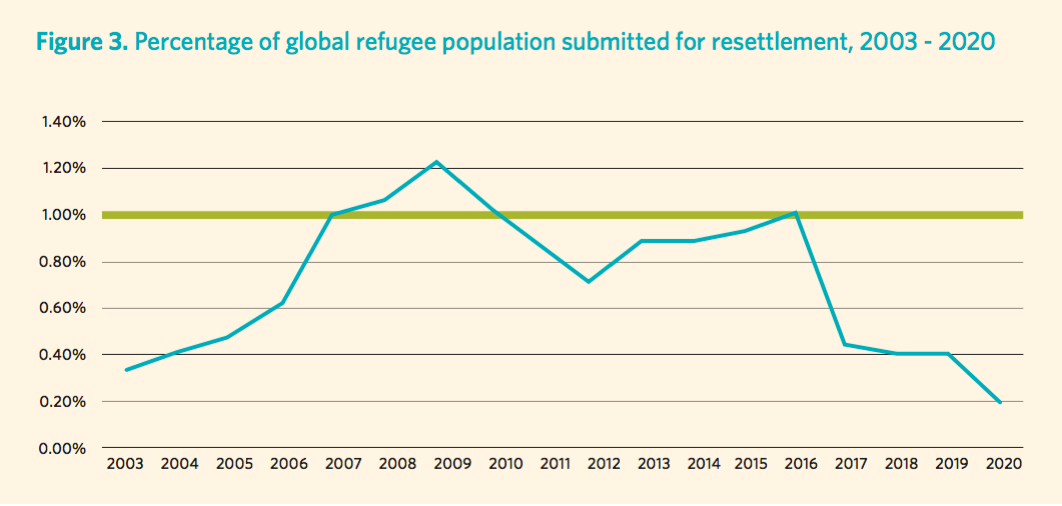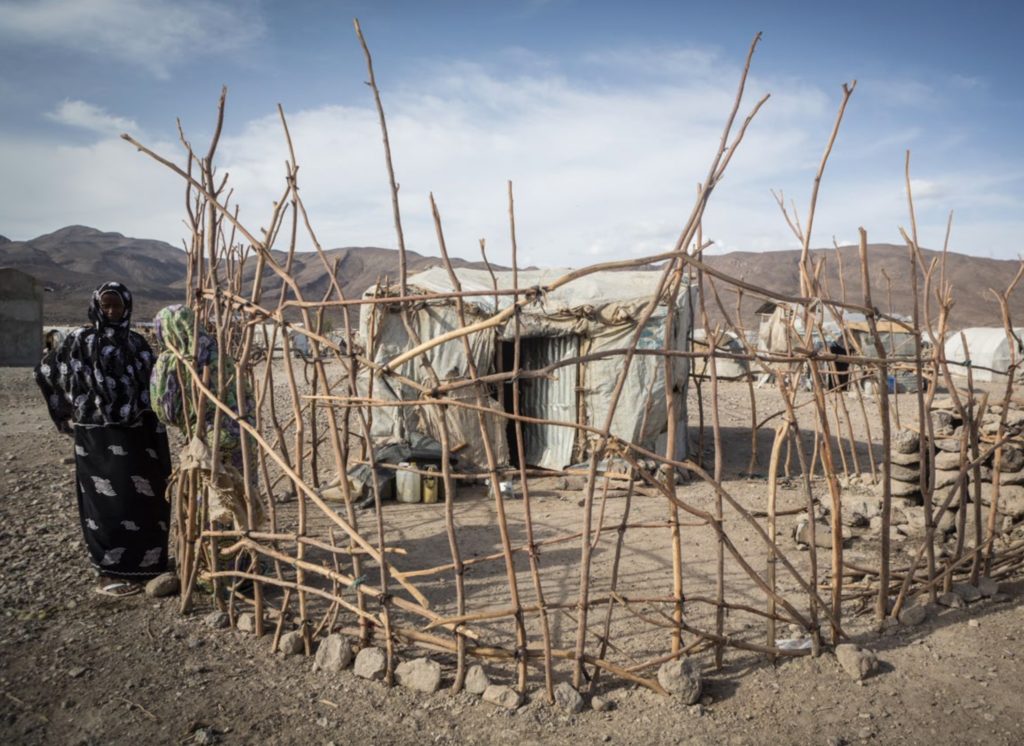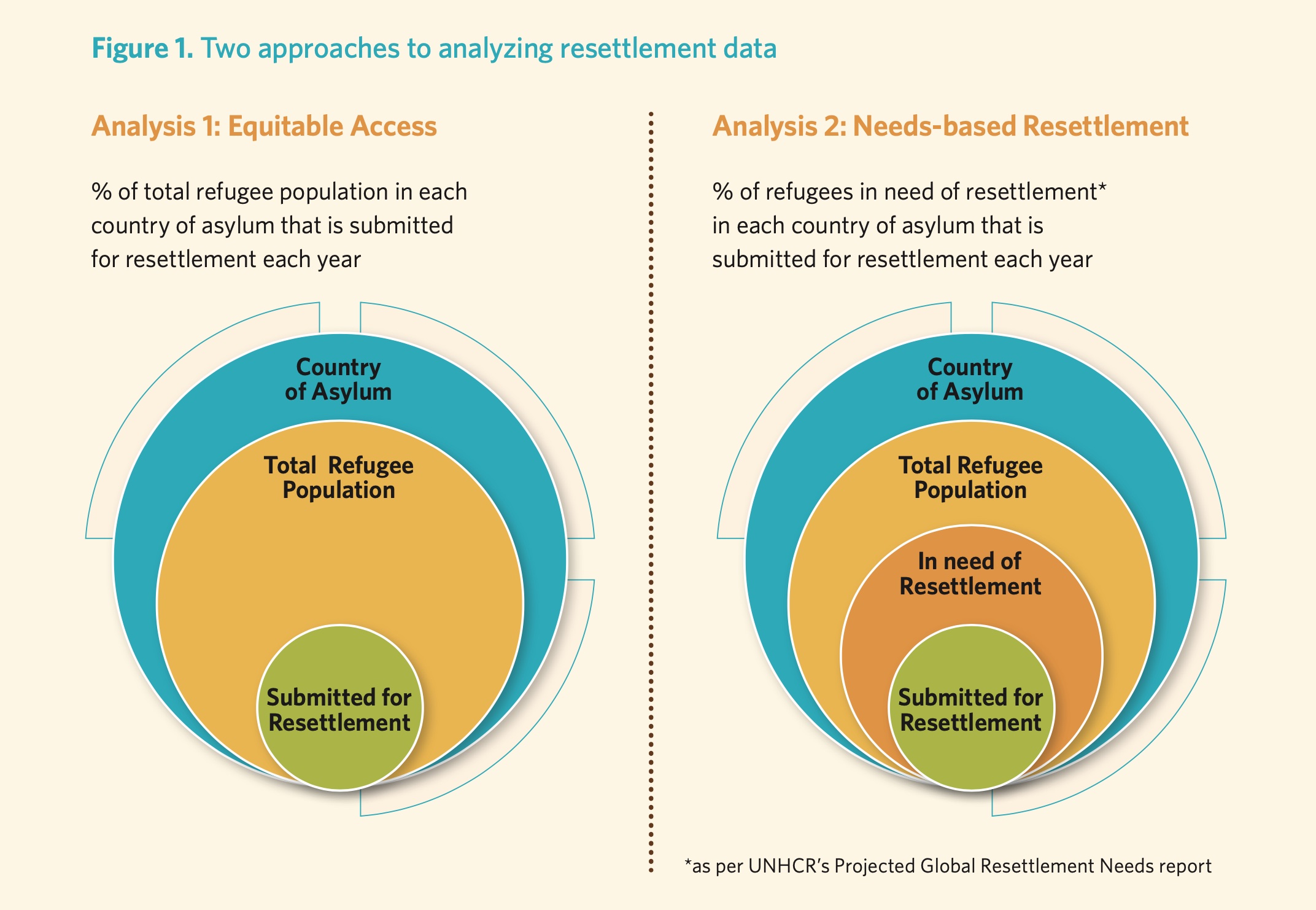Or read the 2-page executive summary here.
The past few years have taken a heavy toll on refugee resettlement. The total number of refugees resettled worldwide dropped from a high of 163,000 in 2016 to a low of 40,000 in 2020, primarily due to the contraction of the U.S. resettlement program under the Trump administration followed by the COVID pandemic. The situation is now more hopeful in light of the Biden administration’s intention to restore the United States’ welcoming posture towards refugees in need of protection.
Ultimately, resettlement will remain a solution that benefits a minority of refugees. Of the 26 million refugees in the world, only a small fraction will have the opportunity to resettle. Historically that fraction has been less than 1% per year. With so few opportunities to spread around, it is imperative that they be reserved for the refugees who need them most.
The process of conducting triage of refugee populations to determine eligibility for resettlement and ensuring that the necessary processing infrastructure is available in the right locations is no small feat. To add to that high-wire act, there is often a mismatch between the profiles of the refugees in need of resettlement and the selection criteria applied by receiving countries.
UNHCR has the unenviable task of attempting to match resettlement needs, processing capacity, available quotas, and the political will of hosting countries. It can feel like aligning stars to try to make it all work. Inevitably, there are gaps, with some populations and locations benefitting more from resettlement than others.
Photo by: Nancy Farese
RefugePoint works on the identification and referral side of the resettlement process in host countries, primarily focused on Africa. In that capacity, we have been conducting detailed data analysis on resettlement from the African continent annually for many years, comparing UNHCR’s projected needs and actual submissions from each country of asylum. We’ve found this analysis useful in identifying locations that need additional resettlement capacity, helping us determine where to focus our resources to be most impactful.
With our new report, “Preserving the Humanitarian Nature of Resettlement,” we expand the data analysis beyond Africa to explore the potential global benefits of such an analysis, and are pleased to share the findings with the broader resettlement community. For example, we found that, over the past three years, only one-third of 1% of refugees have been submitted for resettlement annually. Compared to projected needs, submissions have reached only 5% of the global need, and unevenly so across geographies and populations. As an example, a refugee in need of resettlement in Ecuador is 1,000 times more likely to be referred for resettlement than a refugee with similar need in South Sudan.
It is our view that regularly engaging in such analysis and dialogue could prove beneficial to the global resettlement system to enhance collective planning. It might be used to inform program and advocacy priorities as it reveals locations where supplemental staff capacity and additional quotas are required to meet the projected needs. It may also highlight locations where diplomatic interventions are needed to overcome impediments to resettlement, and could help substantiate appeals for government and philanthropic funding.
The report offers a set of recommendations for all resettlement stakeholders designed to better ensure that refugees who need it have more equitable access to resettlement. As resettlement numbers are set to grow once again, it will be important to ensure that resettlement opportunities are not limited to certain locations but are distributed as equitably as possible, thereby meeting the needs outlined by UNHCR.



